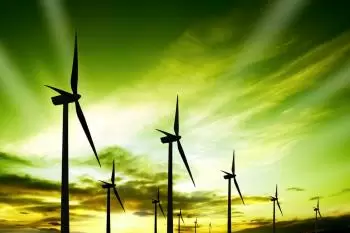
Renewable energy sources are those resources with which energy can be generated that are inexhaustible.
Renewable energy sources are used to achieve sustainable development goals. They are an alternative to fossil fuels and, therefore, make it possible to reduce the emission of greenhouse gases and fight against climate change. These types of gases prevent solar radiation that bounces off the earth's surface from returning to space. The accumulation of heat in the atmosphere causes global warming of the planet.
Nuclear energy is not considered a renewable energy source since the fuel used, uranium, is not limited. The consumption of nuclear fuel is higher than the generation of natural uranium.
Here is a list of the different types of renewable energy:
Solar power
Solar power is the energy that comes from the radiation emitted by the Sun. We distinguish two ways of using solar energy: thermal solar energy and photovoltaic solar energy.
Solar thermal energy consists of using the thermal energy obtained through radiation from the sun to heat a fluid. This heat is then used to produce hot water and even steam.
Obtaining photovoltaic solar energy is carried out through the direct transformation of solar energy into electrical energy. This transformation is carried out in photovoltaic panels through the so-called photovoltaic effect.
Wind power
Wind power systems use the kinetic energy contained in the wind to produce electricity through so-called wind turbines. There are two types of wind installations:
-
Isolated wind energy installations, to generate electrical energy in remote places for self-consumption.
-
Wind farms, made up of a set of wind turbines, to sell the electrical energy generated to the grid.
Hydraulic energy
Hydraulic energy is based on the use of the potential energy of water from a waterfall.
The water moves a turbine whose rotational movement is transferred through a shaft to an electricity generator.
There are basically two types of hydroelectric power plants:
-
Flowing water plants: Those that capture a part of the circulating flow through a river and lead it to the plant. In the plant they activate a turbine to generate electrical energy.
-
Power plants at the foot of the dam: Those located downstream of the reservoirs. They are intended for hydroelectric uses or other purposes such as supplying water to populations or irrigation.
Biomass energy
The biomass is a renewable energy source based on the use of organic materials of vegetable or animal origin. Under the name of biomass energy materials of very different classes are collected:
-
Forest residues.
-
Woody and herbaceous agricultural residues.
-
Waste from various industrial processes.
-
Energy crops.
-
Organic materials contained in municipal solid waste
-
Biogas from livestock waste or biodegradable waste from industrial facilities, urban wastewater treatment or landfill, etc.
Biofuels, which have their main application in transportation, can also be included under the name of biomass.
Biomass applications can be grouped into two groups:
-
Domestic and industrial that work by direct combustion of biomass.
-
Uses linked to the appearance of new resources and new transformation techniques, such as gasification and pyrolysis of biomass.
Although this way of obtaining energy comes from a renewable source, the combustion of biomass generates greenhouse gases.
Tidal energy and wave energy
The seas and oceans are huge solar collectors from which energy can be extracted from various sources (waves, tides and thermal gradients).
Tidal power plants obtain energy from the upward and downward movement of the tides. As the tides rise and fall, currents are generated that allow the water to pass through hydraulic turbines.
The wave energy is produced by the winds and is very irregular. This has led to a multitude of types of machines for its use.
Geothermal energy
The geothermal energy takes advantage of the heat energy to accumulated rocks or waters that are at elevated temperature inside the earth.
In areas with special thermal conditions, a fluid is circulated in them that transports the heat energy to the surface.
The energy generated is used to produce electrical energy in large geothermal power plants. In the domestic sphere it is also used for heating and heating water (DHW).
The performance of these facilities is very high, but on the contrary, the initial cost is very high.